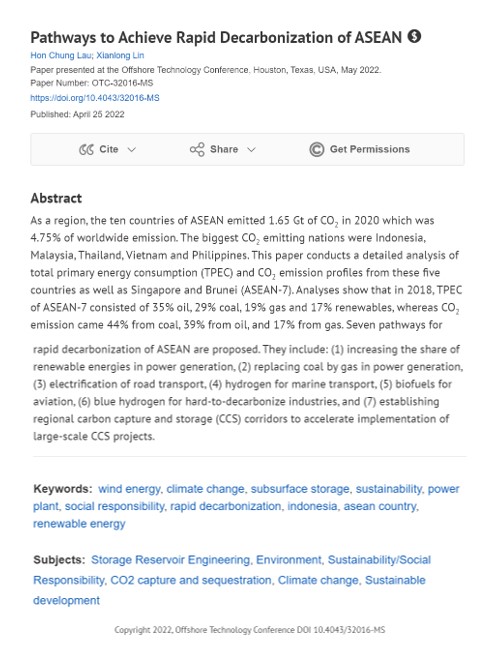
Keyword(s)
Author(s)
1) Hon Chung Lau; 2) Xianlong Lin
Country(ies)
Publisher
Published Date
Access
DOI
1) National University of Singapore
2) National University of Singapore
As a region, the ten countries of ASEAN emitted 1.65 Gt of CO2 in 2020 which was 4.75% of worldwide emission. The biggest CO2 emitting nations were Indonesia, Malaysia, Thailand, Vietnam and Philippines. This paper conducts a detailed analysis of total primary energy consumption (TPEC) and CO2 emission profiles from these five countries as well as Singapore and Brunei (ASEAN-7). Analyses show that in 2018, TPEC of ASEAN-7 consisted of 35% oil, 29% coal, 19% gas and 17% renewables, whereas CO2 emission came 44% from coal, 39% from oil, and 17% from gas. Seven pathways for rapid decarbonization of ASEAN are proposed. They include: (1) increasing the share of renewable energies in power generation, (2) replacing coal by gas in power generation, (3) electrification of road transport, (4) hydrogen for marine transport, (5) biofuels for aviation, (6) blue hydrogen for hard-to-decarbonize industries, and (7) establishing regional carbon capture and storage (CCS) corridors to accelerate implementation of large-scale CCS projects.